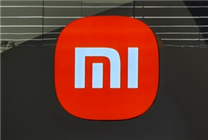The Future of Mobile Phones: A Division Between Self-Developed Chips and the Rest
Key Points:
- The mobile phone industry is set to fragment into two distinct categories: brands with self-developed chips and those without.
- Self-developed chips allow for superior integration of software and hardware, enhancing user experience.
- Companies that invest in in-house chip technology are poised to lead the market by offering enhanced performance and energy efficiency.
In a recent revelation, Lu Weibing, a notable figure in the mobile technology sector, highlighted a crucial shift in the smartphone landscape. He stated that future mobile phone brands will fundamentally bifurcate into two groups: those that utilize self-developed chips and those that rely on third-party semiconductor solutions. This statement has profound implications for the industry, from product performance to user experience.
The Significance of Self-Developed Chips
Lu emphasizes that the importance of self-developed chips transcends mere hardware advancements. These chips enable deeper integration of software and hardware, fostering an ecosystem where all components work in harmony. The result is a seamless user experience characterized by enhanced efficiency and performance.
For instance, major players like Apple have demonstrated this advantage effectively. The iPhone’s impressive power management is largely attributable to the synergy between its chipset, operating system, and control over the ecosystem. This holistic approach ensures optimal performance while maintaining battery life—traits that users have come to expect from high-end smartphones.
A Vision for the Future
The future manufacturers envision is not merely about producing isolated devices; it aims for a symbiotic ecosystem encompassing smart home technologies, vehicles, and personal electronics. Lu enunciates that this ecosystem will leverage artificial intelligence (AI) to deliver a more holistic and personalized experience for users. Imagine a smart home where your devices communicate seamlessly, all facilitated by a robust underlying chip architecture.
In practice, this means that brands like Xiaomi plan to entwine their self-developed chips with software ecosystems that can cater to a wide array of consumer needs. "At the base level is our self-developed chip, followed by an operating system that acts as a bridge to our intelligent ecosystem," says Lu. This layered approach will create an environment where AI empowers users with tailored, intelligent interactions.
Competitive Landscape
As the industry evolves, companies that invest heavily in chip development will likely gain a competitive edge. By controlling critical aspects of their technology stack, these brands will offer not only better performance but also unique features that can set them apart in a crowded marketplace.
Currently, many established smartphone manufacturers rely on third-party chips, which may limit their ability to innovate or respond to market demands swiftly. Conversely, those who invest in their chips will have greater flexibility, allowing for rapid adaptation to new technologies and consumer preferences.
Conclusion
In summary, the mobile phone market is on the brink of a significant transformation, characterized by a clear division between brands that invest in self-developed chips and those that do not. Companies embracing this path will be well-positioned to leverage the synergy of software and hardware, leading to enhanced user experiences and innovative features. As we move toward a more interconnected future, the ability to develop and integrate advanced chips will become a determining factor for success in the competitive smartphone landscape.
Brands that are proactive in this shift will not only improve their market standing but will also reshape how we interact with technology on a daily basis. The question remains: which companies will rise to the challenge and redefine the landscape of mobility?
As we look ahead, it is evident that the investment in self-developed chips is not merely a trend; it is a crucial component in the future of mobile technology.







